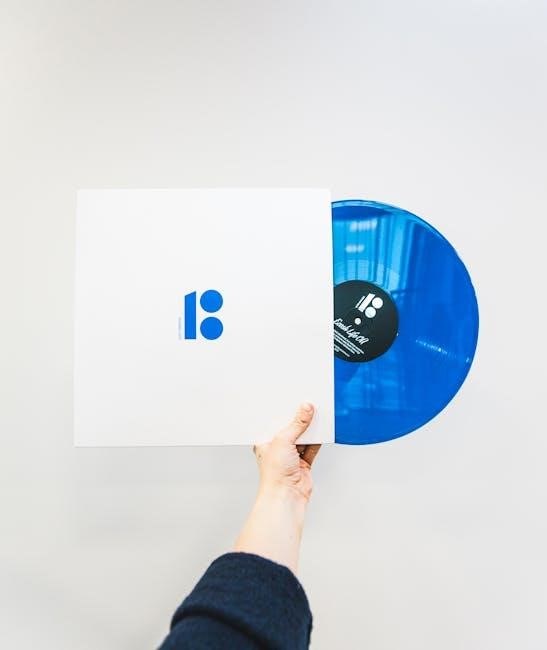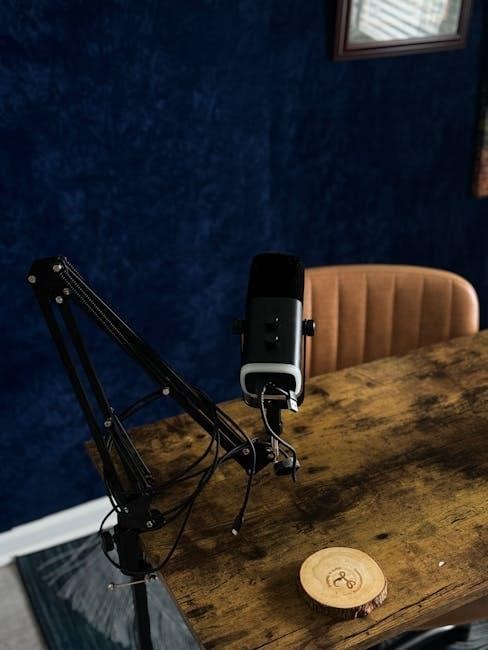
The Media/Wawa Line is a SEPTA Regional Rail service connecting Center City Philadelphia to Wawa in Delaware County. It provides essential transportation for commuters, with schedules, fares, and station details available in the Media/Wawa PDF guide for convenient planning.
1.1 Overview of the Media/Wawa Line
The Media/Wawa Line is a SEPTA Regional Rail service that operates between Center City Philadelphia and Wawa in Delaware County. It serves as a vital commuter route, connecting urban and suburban areas with frequent train services. The line is part of SEPTA’s extensive rail network, ensuring convenient travel for both daily commuters and occasional riders.
The Media/Wawa PDF provides comprehensive details about the route, including train schedules, station locations, and fare information. This resource is essential for passengers to plan their journeys efficiently. The line features 18 stations, starting from Suburban Station in Philadelphia and ending at Wawa, with key stops in Elwyn, Media, and Moylan-Rose Valley.
Trains on the Media/Wawa Line operate on a fixed schedule, with variations between weekdays and weekends. The service is known for its reliability, though occasional adjustments may occur due to maintenance or special events. The Media/Wawa PDF is regularly updated to reflect any changes, ensuring passengers have the most accurate information.
Recent updates include the restoration of full hourly weekend service, adding 12 trains to Saturday schedules. This enhancement improves connectivity and accessibility for residents and visitors alike. The line’s service alerts and disruptions are also detailed in the PDF, helping commuters stay informed about real-time changes.
1.2 History of the Media/Wawa Line
The Media/Wawa Line has a rich history dating back to the early 20th century, originally operating as part of the Pennsylvania Railroad. Over the years, it has evolved to become a critical component of SEPTA’s Regional Rail network, serving commuters in Delaware County and Philadelphia.
Historically, the line was established to connect urban centers with suburban areas, facilitating both residential and commercial growth. The route was initially designed to accommodate both passenger and freight services, though its primary focus shifted to passenger transportation as suburban development expanded.
In the 1980s, SEPTA formally integrated the line into its Regional Rail system, standardizing operations and improving infrastructure. This period marked significant improvements in service reliability and passenger comfort. The line’s terminus in Wawa was established later, enhancing accessibility for residents in Delaware County.
Recent years have seen notable updates, including the extension of services and the introduction of new schedules. The Media/Wawa PDF reflects these changes, ensuring passengers have access to historical and current service details. The line’s history underscores its importance as a reliable transportation link in the region.
Today, the Media/Wawa Line continues to play a vital role in connecting communities, with its history shaping its modern-day operations. The line’s evolution highlights SEPTA’s commitment to adapting to the changing needs of its ridership while preserving its historical roots.
1.3 Key Features of the Media/Wawa Line
The Media/Wawa Line offers several key features that make it a convenient and essential transportation option for commuters. One of its primary features is the availability of detailed train schedules and timetables, which are accessible in the Media/Wawa PDF. This resource provides passengers with accurate information on departure and arrival times, ensuring seamless travel planning.
Another notable feature is the inclusion of fare information and payment options within the Media/Wawa PDF. This allows riders to review pricing, understand payment methods, and budget accordingly before their journey. Additionally, the document includes maps of station locations, enabling passengers to navigate the route effortlessly.
The line also offers real-time service updates and alerts, which are critical for avoiding delays. The Media/Wawa PDF is regularly updated to reflect any changes in service, ensuring passengers stay informed. Furthermore, the document introduces Wawa’s Media Network, highlighting its functionality and benefits for both passengers and advertisers.
Lastly, the Media/Wawa PDF includes studies and reports, such as the Deep Eutectic Solvents Study and the Indicator Minerals Report, which provide insights into the line’s operational and environmental impact. These features collectively make the Media/Wawa Line a comprehensive and user-friendly transportation service.

Content of the Media Wawa PDF
The Media Wawa PDF contains essential details for passengers, including train schedules, fare information, and station maps. It also provides service updates, alerts, and insights into Wawa’s Media Network, ensuring a comprehensive guide for travelers using the Media/Wawa Line.
2.1 Train Schedules and Timetables
The Media Wawa PDF provides detailed train schedules and timetables for the Media/Wawa Line, ensuring passengers can plan their journeys efficiently. It includes departure and arrival times for weekdays, weekends, and major holidays, along with specific train numbers and station stops. The PDF is regularly updated to reflect service changes, such as the reduction of midday and weekend services to every two hours starting August 24, 2025, if state funding is not approved. Additionally, it highlights special timetables for occasions like Christmas Day, offering a clear overview of adjusted services. The document also includes real-time alerts and service interruption guides, helping commuters stay informed about disruptions or delays. By organizing the schedules in an easy-to-read format, the PDF serves as a reliable resource for travelers to navigate the Media/Wawa Line seamlessly. This comprehensive scheduling information ensures that passengers can rely on the Media/Wawa Line for consistent and efficient travel throughout the year.

2.2 Fare Information and Payment Options
The Media Wawa PDF offers a detailed breakdown of fare information and payment options for the Media/Wawa Line. It outlines the cost of tickets based on travel zones, ensuring passengers understand the pricing structure before their journey. The document also highlights various payment methods, such as the SEPTA Key Card, cash payments at station fare kiosks, and mobile payments through the SEPTA app. For convenience, the PDF provides instructions on how to purchase and reload fare cards, making it easier for commuters to manage their travel expenses. Additionally, it includes information on discounted fares for seniors, disabled individuals, and youth, ensuring affordability for all riders. The PDF also notes any fare adjustments or promotions, keeping passengers informed about cost-effective options. By organizing this information clearly, the Media Wawa PDF serves as a one-stop resource for fare-related queries, helping travelers plan their budgets and payments efficiently. This transparency ensures a hassle-free experience for those using the Media/Wawa Line.

2.3 Station Locations and Maps
The Media Wawa PDF provides a comprehensive list of station locations along the Media/Wawa Line, ensuring passengers can easily identify their boarding and alighting points. The document includes a detailed map that visually represents the entire route, from Suburban Station in Center City Philadelphia to the final stop in Wawa, Delaware County. This map is particularly useful for first-time riders, as it illustrates the geographical layout of the stations and their proximity to key landmarks. Additionally, the PDF highlights major stations such as Elwyn, Media, and Moylan-Rose Valley, offering a clear overview of the service area. For each station, the guide includes address information and nearby landmarks, making it easier for commuters to navigate. The map also indicates transfer points and connecting lines, helping passengers plan their journeys seamlessly. By providing both textual and visual representations of the stations, the Media Wawa PDF serves as an indispensable tool for travelers seeking to familiarize themselves with the Media/Wawa Line. This section ensures that passengers can efficiently locate their desired stations and plan their trips with confidence.

Service Updates and Alerts
The Media Wawa PDF includes essential service updates and alerts, such as schedule changes, disruptions, and maintenance work. It provides real-time alerts for delays or cancellations, ensuring passengers stay informed and plan their journeys accordingly.
3.1 Recent Service Changes
Recent service changes on the Media/Wawa Line include adjustments to train schedules and service frequencies. As of June 15, 2025, SEPTA restored Regional Rail service from Elwyn to Wawa, extending the line to 18 stations. This change aims to improve connectivity for commuters in Delaware County.
Additionally, weekend service on the Media/Wawa Line has been modified. Starting August 24, 2025, midday and weekend service will be reduced from hourly to every two hours if new state funding is not approved. This adjustment may impact travel plans for regular passengers.
The Media Wawa PDF provides detailed updates on these changes, ensuring passengers are informed about schedule modifications. It also highlights the addition of 12 trains to Saturday service, enhancing weekend travel options. These updates reflect SEPTA’s efforts to balance service levels with operational needs.
Passengers are advised to consult the Media Wawa PDF regularly for the latest information on service changes, ensuring smooth and efficient travel on the Media/Wawa Line.
3.2 Schedule Reductions and Adjustments
The Media/Wawa Line has undergone schedule reductions and adjustments to optimize service delivery. As of August 24, 2025, midday and weekend service frequencies will be reduced from hourly to every two hours due to funding constraints. This change impacts both Saturday and Sunday schedules, potentially affecting commuters who rely on these services.
The reduction aims to balance operational demands with available resources. SEPTA has emphasized that these adjustments are temporary and subject to change based on future funding allocations. Passengers are encouraged to review the Media Wawa PDF for updated timetables and plan their journeys accordingly.
Key impacts include extended wait times for off-peak travelers and reduced connectivity during weekends. The Media Wawa PDF provides detailed schedules, enabling passengers to adapt to the new service pattern. SEPTA continues to monitor demand and adjust services to meet commuter needs while addressing budget limitations.

Stay informed by regularly checking the Media Wawa PDF for the latest updates on schedule adjustments and reductions.
3.3 Service Alerts and Disruptions
The Media/Wawa Line occasionally experiences service alerts and disruptions due to various factors such as weather conditions, mechanical issues, or track maintenance. One notable example is the “slippery rail” phenomenon, which occurs when falling leaves create a residue on the tracks, potentially causing delays. SEPTA has implemented measures to address this issue, including the use of special equipment to clean the tracks and improve traction.
Passengers are advised to check the Media Wawa PDF for real-time updates and any service alerts before their journey. Additionally, SEPTA provides alerts through their website and mobile app, ensuring commuters stay informed about disruptions. Recent updates include weekend shuttle bus services during track work and adjusted schedules to accommodate engineering projects.
Service disruptions are often communicated in advance, allowing passengers to plan alternative routes if necessary. The Media Wawa PDF serves as a reliable resource for understanding service changes and ensuring a smooth travel experience.

Wawa’s Media Network
Wawa’s Media Network, including the Goose Media Network, offers a platform for advertising and retail solutions. It provides real-time engagement through digital screens in stores, enhancing customer experience and brand visibility. This network is part of Wawa’s digital transformation strategy.
Wawa’s Media Network, including the Goose Media Network, is a retail media platform designed to enhance advertising and customer engagement. Launched by Wawa, this network leverages digital screens in stores to deliver targeted ads, promotions, and brand messages. It aims to create a seamless shopping experience while offering brands valuable visibility. The platform is part of Wawa’s broader digital transformation strategy, focusing on innovation and customer-centric solutions. By integrating media capabilities into its convenience stores, Wawa strengthens its position as a leader in the retail and advertising space. This initiative reflects Wawa’s commitment to modernizing its services and providing partners with data-driven marketing opportunities.
4.2 Functionality and Benefits

Wawa’s Media Network, including the Goose Media Network, offers advanced functionality designed to enhance advertising effectiveness and improve the shopping experience. The platform utilizes digital screens installed in Wawa stores to display targeted advertisements, promotional content, and brand messages. This allows brands to reach customers in real-time, leveraging location-based targeting and demographic insights. The network also provides real-time metrics and analytics, enabling advertisers to track the performance of their campaigns and optimize their strategies. For Wawa, this platform strengthens its position as a leader in convenience retail while generating additional revenue streams. Customers benefit from a more engaging and personalized shopping experience, with relevant offers and information displayed during their visits. The integration of this media network aligns with Wawa’s commitment to innovation and customer satisfaction, making it a win-win for both advertisers and shoppers. By combining cutting-edge technology with strategic marketing, Wawa’s Media Network sets a new standard in retail advertising.
4.3 Impact on Advertising and Retail
Wawa’s Media Network, particularly the Goose Media Network, has revolutionized the retail advertising landscape by offering brands unparalleled opportunities to engage with customers. This platform allows for targeted advertising through digital screens in Wawa stores, ensuring that brands can reach their audience with precision and relevance. The real-time metrics and analytics provided by the network enable advertisers to optimize their campaigns effectively, leading to increased ROI and customer engagement. For Wawa, this initiative not only enhances the shopping experience by delivering personalized content but also opens new revenue streams, positioning the company as a leader in the convenience retail sector. The integration of this media platform aligns with broader trends in retail advertising, where data-driven strategies and in-store digital experiences are becoming essential. By leveraging its vast customer base and strategic store locations, Wawa’s Media Network is reshaping how brands connect with consumers, making it a pivotal player in the evolving retail media ecosystem.

Studies and Reports Related to Media Wawa
The Media Wawa PDF includes studies like the Deep Eutectic Solvents Study and the Indicator Minerals Report, which explore innovative extractants and mineral identification methods. These documents provide valuable insights into scientific advancements and practical applications, available for download in the Media Wawa PDF format.
5.1 Deep Eutectic Solvents Study
The Deep Eutectic Solvents Study, as detailed in the Media Wawa PDF, explores the use of hydrophilic deep eutectic solvents (DESs) as efficient extractants for removing heterocyclic compounds from light hydrocarbon fractions. These solvents, formed by mixing hydrogen bond donors and acceptors, offer unique properties that enhance extraction efficiency. The study highlights their potential in industrial applications, particularly in refining processes. Researchers demonstrate that DESs can effectively separate impurities without requiring complex equipment, making them a cost-effective and environmentally friendly alternative to traditional methods. The findings are particularly relevant for industries seeking sustainable solutions for hydrocarbon purification. The Media Wawa PDF provides a comprehensive overview of the study, including experimental results and practical implications. This research contributes to advancing cleaner technologies in the energy sector.
5.2 Indicator Minerals Report
The Indicator Minerals Report, as outlined in the Media Wawa PDF, focuses on the identification and analysis of minerals that are indicative of specific geological formations or economic deposits. These minerals are characterized by their unique physical and chemical properties, which make them valuable tools for mineral exploration. The report emphasizes that ideal indicator minerals are rarely found in rocks outside their host deposits, making them reliable markers for identifying potential resource locations. For instance, certain heavy minerals are highlighted for their ability to withstand weathering and transport processes, preserving their genetic signatures. This makes them particularly useful in tracing mineral deposits back to their source. The study also explores the practical applications of these minerals in exploration strategies, offering insights into how they can optimize resource discovery. The Media Wawa PDF provides detailed case studies and methodologies for identifying and interpreting these minerals, underscoring their significance in modern geoscience and resource development. This research is essential for geologists, explorers, and industries seeking efficient ways to locate and evaluate mineral resources.

5.3 Other Relevant Research
Beyond the studies on deep eutectic solvents and indicator minerals, the Media Wawa PDF delves into other areas of research that complement these topics. One notable area is the exploration of strategic trends that are expected to influence various sectors, including business, government, education, media, and society. These insights provide a broader context for understanding the potential applications of the studies mentioned in the PDF. Additionally, the document touches on the translation and interpretation of ancient texts, such as the Medinet Abu inscriptions, which offer historical perspectives on resource utilization and cultural practices. This interdisciplinary approach highlights the importance of integrating diverse fields of study to address contemporary challenges. Furthermore, the PDF includes research on the denitrogenation of light hydrocarbon fractions using natural deep eutectic solvents, which has implications for industrial processes and environmental sustainability. These varied research topics underscore the comprehensive nature of the Media Wawa PDF, making it a valuable resource for scholars and professionals seeking a holistic understanding of these subjects.